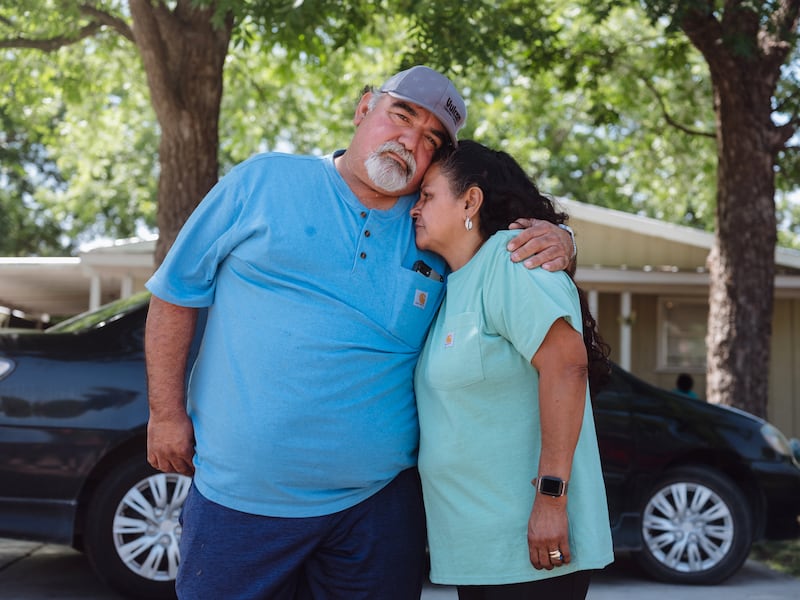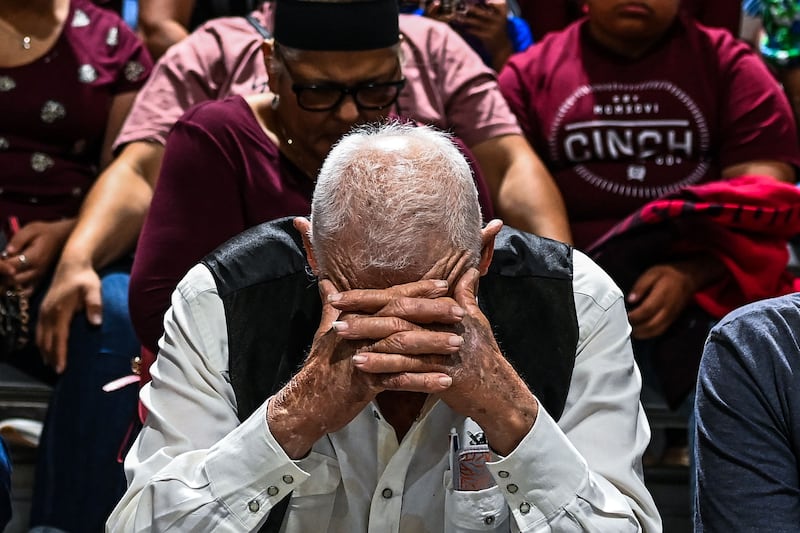The obsession with the right of private citizens to bear arms makes American culture appear irretrievably broken. Although the causes of gun violence have been endlessly dissected and discussed, there is one underlying cause that receives insufficient attention: the symbiotic entwinement of the highly profitable gun industry with the American economy.
This entwinement has had tragic results everywhere but none more obvious than in schools.
Robb Elementary School, where 19 children and two teachers were murdered by an 18-year-old a few days ago, is part of the Uvalde Consolidated Independent School District, which has two secondary schools and five primary schools.
For an Irish educator, the preventative security measures taken by this school district have a surreal quality. The district employs four private police officers and provides free breakfast or lunch for any local law enforcement officers who visit campuses while on patrol.
Conor McManus: Donegal had long prepared for this day – and they seized it
From Delhi to Dublin: ‘I ended up making really good friends, they are my safety net’
Why did Irish pharma exports escape the tariff guillotine?
Alzheimer’s: ‘I’ve lost my friend and my companion,’ says Úna Crawford O’Brien of fellow Fair City actor Bryan Murray
All classroom doors are supposed to be locked during class. In addition to the private police officers, there are security guards, a threat assessment team on each campus, social media monitors and software that screens and tracks every visitor. Security cameras, perimeter fencing, student emergency drills and an anonymous threat reporting system are all part of a list of measures that runs to two full pages.
None of this was able to prevent Salvador Ramos from entering and killing. And later Joe Garcia, husband of teacher Irma, was another casualty.

America’s alleged love affair with guns is well-documented. Even in fiction, this obsession is obvious. If you have never read Harper Lee’s To Kill a Mockingbird, minor spoilers follow.
It has always struck me as incongruous that Atticus Finch, the upright lawyer and loving father at the heart of the novel, buys his two young children air rifles for Christmas, even if reluctantly. The advice that he gives them gives the book its title.
“You can shoot all the bluejays you want, if you can hit ‘em,” he tells them, “but remember it’s a sin to kill a mockingbird.”
His own nickname as a young man was One-Shot Finch and his facility with a gun is central to a tense scene early on in the novel.
Even Atticus Finch buys air rifles for his preteen children. Nonfictional Americans are even more obsessed with firearms. When I lived in Texas, I knew a family where there had been a tragic accident with a BB gun (a type of low-powered air gun). An eight-year-old had left his BB gun under a cushion and, in a freak accident, it had discharged, leaving one of the steel balls it fires lodged in the heart of his little brother.
The younger child survived but had a severely curtailed life. As an Irish person, I wanted to burst out — why in the name of God does an eight-year-old have his own BB gun? This was a perfectly normal, sane, functional middle-class Texan family.
A letter published just days ago in the New England Journal of Medicine, says that “from 2019 to 2020, the relative increase in the rate of firearm-related deaths of all types (suicide, homicide, unintentional, and undetermined) among children and adolescents was 29.5 per cent — more than twice as high as the relative increase in the general population”. Injuries involving firearms have therefore become the most common cause of death among people aged one-24 in the United States.

Most of these deaths do not happen in the context of mass school shootings but the repercussions of gun violence in schools are enormous. Washington Post research shows that since Columbine in 2000, more than 311,000 students have experienced gun violence at school, ranging from nonfatal threats to mass killings.
We tend to focus almost obsessively on the individual perpetrators, almost all angry young men — a girl aged 16 being the rare exception
Gun violence stems from a complex mix of factors, not all of which are present in every case, such as mental health issues, experiences of being bullied and excluded, and home situations that lead to vulnerability.
However, this focus on individuals and their circumstances, while understandable, serves to obscure one vital factor: the obscene profits made from guns. According to NSSF, the firearm industry trade organisation, “companies in the United States that manufacture, distribute and sell firearms and ammunition” are responsible for hundreds of thousands of jobs. The industry also “generates $7.86 billion in taxes including property, income and sales-based levies”. In a country where tax avoidance is an Olympic sport, this indicates the degree of profit.
While the NRA, shovelling millions into politicians’ electoral funds, is the public face of anti-gun control activists, the firearms industry itself mostly escapes scrutiny. Its insidious influence suggests that American culture does not suffer so much from a love affair with guns as an addiction cynically exploited to generate profit.
Until the suppliers and pushers are tackled, the lethal addiction will continue. Gun control may seem like a no-brainer to Europeans but it will never happen until the economic influence of the gun industry is dismantled. Meanwhile, the mockingbirds will continue to die.















